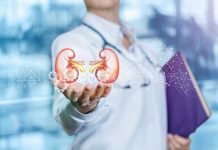
A hidden molecule, 100 times stronger than any antibiotic in your medicine cabinet, could soon decide who wins the war against superbugs—and who doesn’t.
Quick Take
- Scientists at the University of Liverpool have unveiled Novltex, a synthetic antibiotic 100x more potent than current options.
- Novltex targets an immutable bacterial structure, making it nearly impossible for bacteria to develop resistance.
- Antibiotic resistance claims millions of lives annually; Novltex could dramatically change the trajectory of this crisis.
- The discovery is in preclinical testing, with clinical trials on the horizon and global implications at stake.
How Antibiotic Resistance Became a Global Catastrophe
Antibiotics once transformed life expectancy, but the celebration was short-lived. Overuse and careless prescriptions fueled the rise of “superbugs”—bacteria that shrug off even our strongest drugs. Drug-resistant infections now kill nearly five million people every year, a number the World Health Organization ranks among the top ten threats to humanity.
Hospital wards across the world are quietly losing ground to multidrug-resistant (MDR) pathogens like MRSA and Enterococcus faecium. Meanwhile, the pharmaceutical pipeline for new antibiotics has dried up, leaving doctors with decades-old drugs that are losing their punch. The AMR crisis isn’t looming. It’s here.
For years, researchers have combed through exotic soils, deep-sea vents, and even ancient mining sites in desperate search of new antibiotics. While a few promising candidates like teixobactin and AI-discovered Halicin made headlines, none have yet become a clinical mainstay.
The world’s hospitals have been fighting superbugs with increasingly empty hands, and most experts agree: We need a breakthrough, and we need it now.
The Novltex Discovery: A Potential Game Changer
Enter Novltex—a new class of antibiotic synthesized by Dr. Ishwar Singh’s team at the University of Liverpool. Unlike most antibiotics, which bacteria can eventually outmaneuver, Novltex attacks lipid II, a molecule essential to every bacterial cell wall and virtually impossible for bacteria to alter without self-destructing.
In laboratory tests, Novltex obliterated MDR bacteria at doses 100 times lower than standard drugs, including notorious superbugs like MRSA. The compound’s modular, synthetic design makes it both scalable and rapidly adaptable, allowing researchers to tweak its structure to outpace emerging threats. Early data show no toxicity in human cell models, and the synthesis process is efficient enough for industrial-scale production.
Publication of these results in the Journal of Medicinal Chemistry in September 2025 sent ripples through the scientific community. Dr. Singh called the discovery “a breakthrough in our fight against antimicrobial resistance,” emphasizing the molecule’s resilience to resistance and its promise as a durable solution.
Plans are already underway for preclinical animal trials, and global partnerships are forming to fast-track clinical development. If Novltex performs as expected, the medical playbook for treating superbug infections could be rewritten within a few years.
What’s at Stake: Lives, Money, and Global Stability
The stakes could not be higher. Patients battling MDR infections often face prolonged hospital stays, repeated surgeries, and, too often, death. Hospitals spend billions annually combating AMR, while pharmaceutical companies have mostly abandoned antibiotic research due to poor return on investment.
Novltex could upend this calculus: If it succeeds through clinical trials, it might become a new frontline defense, saving countless lives and billions in healthcare costs. Its modular design could also set a precedent, spurring renewed investment in antibiotic R&D and encouraging other researchers to pursue synthetic, resistance-proof solutions.
International health organizations are watching closely. AMR’s economic, political, and social ripple effects are profound. Nations may be forced to reconsider how they regulate antibiotic use, fund research, and structure healthcare incentives. Novltex—if it lives up to its promise—could catalyze a global policy shift, making AMR a solvable problem rather than a looming disaster.
Expert Perspectives and Future Uncertainties
While the scientific consensus is optimistic, experts urge caution. Laboratory triumphs don’t always translate to clinical success. The leap from test tube to hospital bed is fraught with failure points—unanticipated toxicity, delivery challenges, or regulatory hurdles could stall Novltex’s ascent.
Still, peer-reviewed publication and widespread scientific endorsement add credibility. Researchers from MIT and Vienna point to Novltex’s unique mechanism and modularity as potential keys to outpacing bacterial evolution. The pharmaceutical industry, long skittish about antibiotics, may find Novltex’s synthetic, scalable platform irresistible if early trial results hold.
The next year will be pivotal. Animal studies, followed by human clinical trials, will determine whether Novltex is the breakthrough the world needs—or another chapter in the superbug saga.
For now, hope is surging in labs and hospitals worldwide. The war against superbugs just got a new secret weapon. Whether this weapon delivers victory or heartbreak is a story the world is watching, one dose at a time.
Sources:
MedicalXpress: Scientists discover powerful new antibiotic class to tackle deadly superbugs
IFLScience: New Powerful Antibiotic That Kills Superbugs Found Hiding Deep In A Chinese Mine
MIT News: Using generative AI, researchers design compounds that can kill drug-resistant bacteria
News-Medical: Halicin: The AI-Discovered Antibiotic That Fights Superbugs
miniPCR: Fighting Superbugs with AI: A New Hope in Antibiotic Discovery



